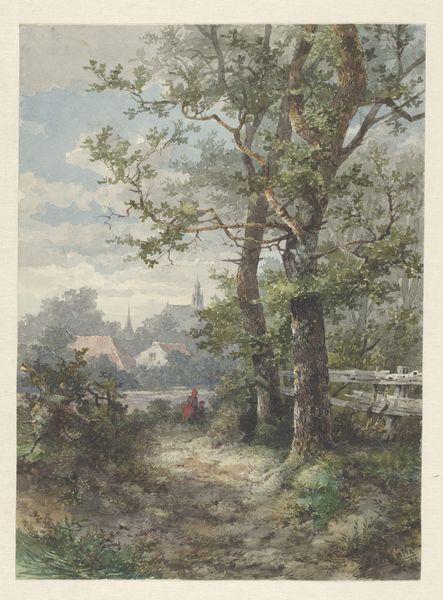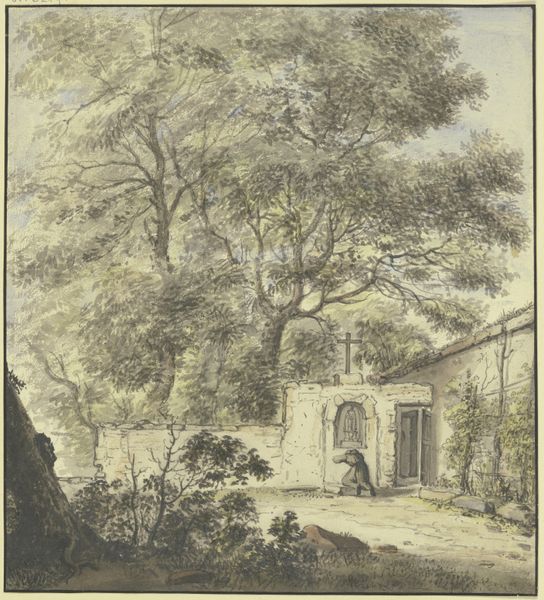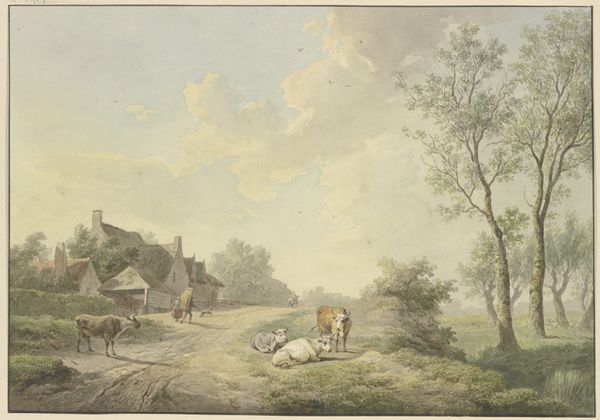
Dimensions: 10 11/16 x 8 1/16 in. (27.2 x 20.5 cm)
Copyright: Public Domain
Curator: Paul Sandby, a key figure in the development of British watercolor art, created this piece titled "Travelers Entering a Town" sometime between 1751 and 1809. It’s currently housed here at the Metropolitan Museum of Art. Editor: My initial impression is one of gentle dilapidation. The pale watercolors create a sense of faded grandeur. I'm drawn to the texture of the aged walls and how it contrasts with the softness of the foliage. Curator: Precisely. Sandby’s interest lay in documenting the changing face of the British landscape and its built environment, particularly its architectural ruins and emergent urbanization, though he rendered it here in what seems like an Italianate fashion. Consider the rise of the Picturesque movement at the time, valuing irregularity and "naturalness." Editor: You can certainly see the influence. Look at the brushwork – so delicate, almost tentative. The watercolor medium itself allows for this beautiful transparency, which mirrors the dissolving authority of these aged structures and brings up thoughts of entropy. Curator: A good point about entropy, but I think that it's more nuanced than simple decay. Sandby often worked for wealthy patrons who wished to see themselves reflected favorably in depictions of their holdings. How might the depiction of ruin itself factor into elite identity? Editor: It brings me back to thinking of watercolor again – the ready availability of portable kits helped foster artistic markets that transformed who had access to art production. With watercolor, the wealthy now possessed a new tool to re-encode class and leisure in the British landscape. Curator: Fascinating. This points to watercolor's complex relationship to broader societal trends. It democratized access to art while, perhaps ironically, cementing existing power structures by rendering elite taste in tangible form. Editor: Absolutely. The light in the composition, seemingly captured directly, draws the eye toward the travelers entering the town. Sandby invites us to join the experience, too. Curator: So, in this rather subtle watercolor, we have converging aesthetic trends, economic forces, and the very specific circumstances of its creation—a glimpse into a world of art, patronage, and societal aspiration. Editor: I now understand the context better and can appreciate that watercolor is not merely a medium. Thanks! It represents a whole network of relationships: to labor, land, capital, and social value in late 18th century Britain.
Comments
No comments
Be the first to comment and join the conversation on the ultimate creative platform.













